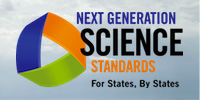
by Gina Cervetti
University of Michigan
March 19, 2014
 Last week Oregon became the 10th state in the U.S. to adopt the Next Generation Science Standards (NGSS), with more states expected to follow suit. The NGSS and the Framework for K–12 Science Education that served as the basis for the development of the Standards are notable for their attention to the role of literacy in learning and practicing science.
Last week Oregon became the 10th state in the U.S. to adopt the Next Generation Science Standards (NGSS), with more states expected to follow suit. The NGSS and the Framework for K–12 Science Education that served as the basis for the development of the Standards are notable for their attention to the role of literacy in learning and practicing science.
The Framework for K–12 Science Education (Framework) was developed by the National Research Council as the first of a two-stage process in the development of new national science standards. The Framework, which was released in 2011, describes the reading and writing of scientific texts as “fundamental practices” in science and engineering that “constitute at least half of engineers’ and scientists’ total working time” (p. 72). The Framework also points to specific challenges for students who are beginning to engage with scientific texts and forms of communication, including unfamiliar vocabulary in science texts, the need to read for precise meaning, the need to justify their arguments in talk and writing, and the need to understand multimodal texts, which communicate with words and other forms of representation, such as charts and diagrams. The Framework specifies a set of related goals for students by Grade 12:
- Use words, tables, diagrams, and graphs (whether in hard copy or electronically), as well as mathematical expressions, to communicate their understanding or to ask questions about a system under study.
- Read scientific and engineering text, including tables, diagrams, and graphs, commensurate with their scientific knowledge and explain the key ideas being communicated.
- Recognize the major features of scientific and engineering writing and speaking and be able to produce written and illustrated text or oral presentations that communicate their own ideas and accomplishments.
- Engage in a critical reading of primary scientific literature (adapted for classroom use) or of media reports of science and discuss the validity and reliability of the data, hypotheses, and conclusions. (pp. 75-76)
The second stage of the Standards’ development process resulted in the new NGSS. The NGSS articulate standards as a set of performance expectations that connect disciplinary core ideas, scientific and engineering practices, and cross-cutting concepts, such as structure and function. Each performance expectation describes what students should be able to do in order to demonstrate that they have met the standard. For example, within the topic Weather and Climate, third grade students are expected to “Obtain and combine information to describe climates in different regions of the world” (3-ESS2-2).
The NGSS embed specific connections to the Common Core State Standards for English Language Arts and Literacy in History/Social Studies, Science, and Technical Subjects (CCSS) with each performance expectation. For example, the third grade performance expectation above (3-ESS2-2) is associated with three CCSS standards: RI.3.1, RI.3.9, and W.3.8. Some of the developers of the Common Core State Standards worked with NGSS development team to identify these literacy connections.
The NGSS also include an appendix that further elaborates the nature of the connections with the CCSS. Appendix M describes literacy skills as “critical to building knowledge in science” (p. 1). It lays out how particular CCSS standards connect to science and engineering practices. For example, CCSS Reading Anchor Standard #7 calls for students to “integrate and evaluate content presented in diverse formats and media, including visually and quantitatively, as well as in words.” This anchor standard and related individual grade-specific standards are linked to the need for scientists and engineers to understand and present information in a variety of visual formats.
Thus far, states have been slow to adopt the NGSS; though 26 states participated in the development of the NGSS as lead state partners, only ten of these states and the District of Columbia have adopted the standards. Familiarity with literacy connections in the NGSS may be helpful to IRA members as more states consider adoption in the coming years.
This article is from the International Reading Association’s Literacy Research Panel. Reader response is welcomed. E-mail your comments to LRP@/.